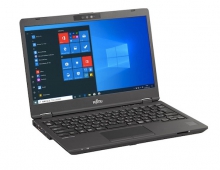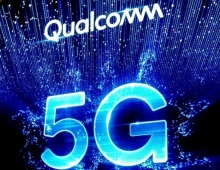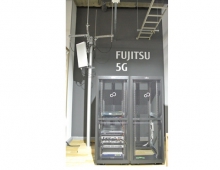
Fujitsu Thin Client Gateway Technology Enables Use of PC Web Application Interfaces on Smart Devices
Fujitsu has developed a high-speed thin client gateway technology that allows existing web applications for PCs to be quickly displayed in the same way on smartphones, tablets and other smart devices.
The technology also permits control of software via a mobile communications environment (3G/WiMAX/LTE).
Previously, correctly displaying application interfaces designed for PCs on a smart device has required the interface to be converted into a format supported by smart devices. However, with thin client systems that transfer unmodified screen data to a smart device, specialized server installations and system deployments have been necessary. In either case, when utilizing the technology in a mobile communications environment, data (packet) loss often occurs which diminishes usability.

Fujitsu Laboratories has developed a gateway technology that allows for easy access to existing business systems and reduce the volume of transferred screen data to a tenth of previous levels. By deploying gateways that incorporate the new technology, business applications can be utilized on smart devices without requiring modifications to existing business systems that have been developed for PCs.
Fujitsu's technology acquires screen data using the HTTP protocol, which is generally used for web-based business applications, as well as remote desktop protocol (RDP), which is used in remote desktop tools for desktop PCs. Together with a mechanism that performs authentication and session management for each user, the technology then converts the data in real time to Remote Virtual Environment Computing (RVEC) protocol which enables efficient transmission of screen data, then sends it to the user?s smart device. As a result, it is possible to securely utilize internal company applications on smart devices in a mobile network environment, all without leaving any data on the device and without having to make any modifications to existing web-based business systems.
For applications with quick screen refresh rates, the technology is able to employ a hybrid still video and still image transfer method to enable a 90% reduction in screen data traffic compared to conventional RDP technology (according to Fujitsu research). This, in turn, improves the usability of applications in narrowband mobile network environments that are subject to relatively high latency.
By taking advantage of the technology, users will be able to employ a variety of smart devices, including personal devices they may own and use at work as part of a BYOD (Bring Your Own Device) policy. They will be able to access existing internal business applications that are designed for PCs, and to smoothly view e-learning video content intended for viewing on company PCs.
Previously, correctly displaying application interfaces designed for PCs on a smart device has required the interface to be converted into a format supported by smart devices. However, with thin client systems that transfer unmodified screen data to a smart device, specialized server installations and system deployments have been necessary. In either case, when utilizing the technology in a mobile communications environment, data (packet) loss often occurs which diminishes usability.

Fujitsu Laboratories has developed a gateway technology that allows for easy access to existing business systems and reduce the volume of transferred screen data to a tenth of previous levels. By deploying gateways that incorporate the new technology, business applications can be utilized on smart devices without requiring modifications to existing business systems that have been developed for PCs.
Fujitsu's technology acquires screen data using the HTTP protocol, which is generally used for web-based business applications, as well as remote desktop protocol (RDP), which is used in remote desktop tools for desktop PCs. Together with a mechanism that performs authentication and session management for each user, the technology then converts the data in real time to Remote Virtual Environment Computing (RVEC) protocol which enables efficient transmission of screen data, then sends it to the user?s smart device. As a result, it is possible to securely utilize internal company applications on smart devices in a mobile network environment, all without leaving any data on the device and without having to make any modifications to existing web-based business systems.
For applications with quick screen refresh rates, the technology is able to employ a hybrid still video and still image transfer method to enable a 90% reduction in screen data traffic compared to conventional RDP technology (according to Fujitsu research). This, in turn, improves the usability of applications in narrowband mobile network environments that are subject to relatively high latency.
By taking advantage of the technology, users will be able to employ a variety of smart devices, including personal devices they may own and use at work as part of a BYOD (Bring Your Own Device) policy. They will be able to access existing internal business applications that are designed for PCs, and to smoothly view e-learning video content intended for viewing on company PCs.





















